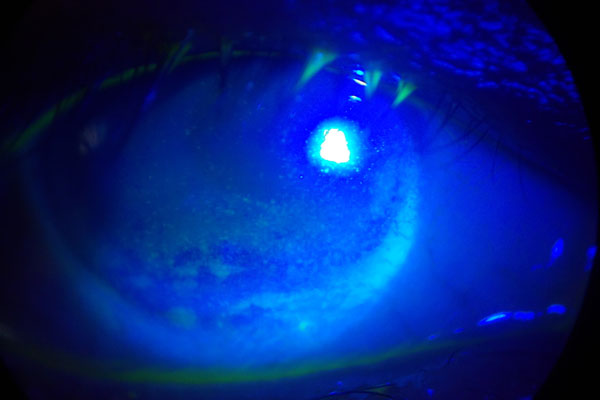Benzalkonium chloride corneal toxicity post-cataract surgery
Abstract
Two patients with presumed benzalkonium chloride (BAK) corneal toxicity after routine cataract surgery are presented. Patient 1 had corneal stroma and Descemet’s membrane folds. Patient 2 had moderate superficial punctate epithelial erosions (SPEE). They were on Chlorsig, Maxidex, and Acular eye drops tds postoperatively. The corneas of these two patients improved when BAK was removed or minimized from the postoperative eye drop regimen. Two vials of 1 ml dexamethasone 4mg/ml for injection were added to Chlorsig 10 ml bottle to substitute for Maxidex eye drops.
BAK toxicity should be suspected when the cornea is not as clear as expected postoperatively. A practical way to eliminate BAK from postoperative eye drops is described, and would be useful until pharmaceuticals mass-produce BAK-free steroid eye drops economically.
References
Gasset AR. Benzalkonium chloride toxicity to the human cornea. Am J Ophthalmol. 1977;84(2):169-171.
Barki WH, Tahir M. Effects of topical benzalkonium chloride on corneal epithelium. Biomedica. 2007;23:65-70.
Urrego-Diaz JA, Frias-Ordonez JS, Figueroa-Echandia G, Duran-Silva G:. Acute corneal edema without epithelial compromise. A case report and literature review. Rev Fac Med. 2017;54(32):513-519.

Copyright (c) 2020 Keith Soo Keat Ong, Leonard Ong

This work is licensed under a Creative Commons Attribution 4.0 International License.
Authors who publish with this journal agree to the following terms:
- Authors retain copyright and grant the journal right of first publication, with the work twelve (12) months after publication simultaneously licensed under a Creative Commons Attribution License that allows others to share the work with an acknowledgement of the work's authorship and initial publication in this journal.
- Authors are able to enter into separate, additional contractual arrangements for the non-exclusive distribution of the journal's published version of the work (e.g., post it to an institutional repository or publish it in a book), with an acknowledgement of its initial publication in this journal.
- Authors are permitted and encouraged to post their work online (e.g., in institutional repositories or on their website) prior to and during the submission process, as it can lead to productive exchanges, as well as earlier and greater citation of published work (See The Effect of Open Access).


